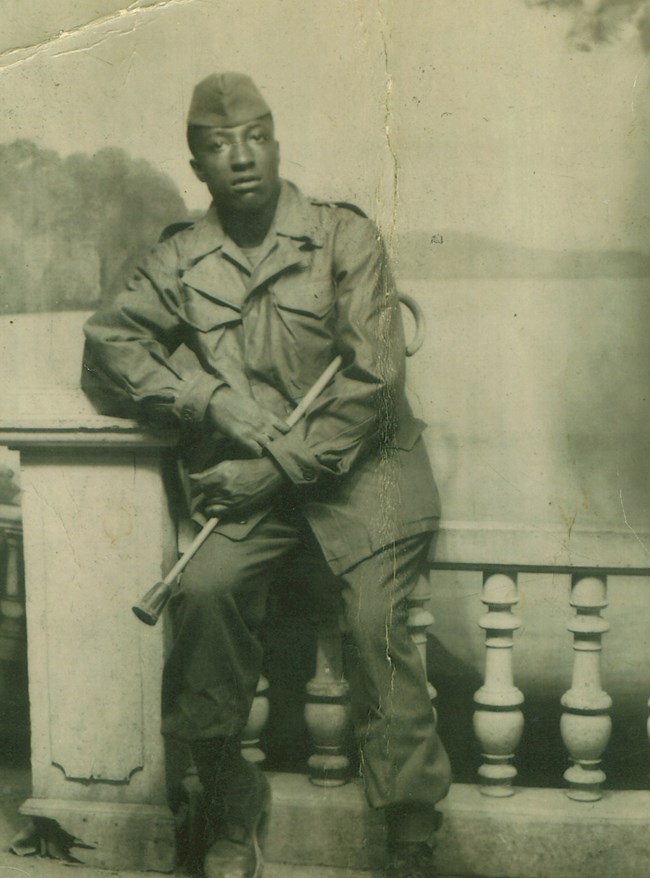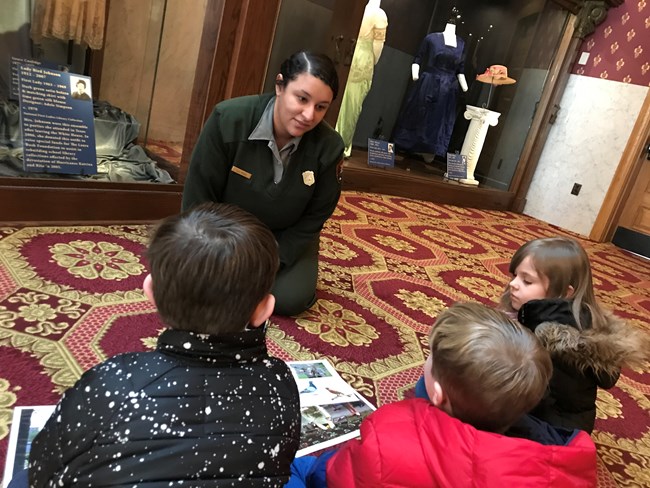Last updated: May 12, 2023
Article
My Park Story: Ranger Lisa Meade Discovers a Family Connection

Photo courtesy of Arthur Card
I have learned a lot about the Civilian Conservation Corps (CCC) through my work as an interpretive park ranger at two different parks. At Cuyahoga Valley National Park, I would frequently lead hikes on the Ledges Trail and tell the story of the trails, steps, and shelter being constructed by the men that stayed at the nearby CCC camp. Then at First Ladies National Historic Site, I learned more about the history of the policies that led to the creation of CCC. That history includes both segregated and integrated housing facilities and Eleanor Roosevelt’s support of women’s CCC camps. It felt like an interesting but far away point in history, until recently, when I learned about my own family connection to the corps.
Over coffee one morning with my father, I learned more about my great uncle. He told me how my Great Uncle Frank Gentry was enrolled in the Civilian Conservation Corps in Company No. 3804 in Alabama. Then through the records of the CCC, I was later able to tell my father more about Uncle Frank’s experience. Although the CCC was intended to be an integrated program, only a handful of the companies were actually integrated in Alabama. When he enrolled in 1939, he was one of only 95 African American youth enrollees out of Alabama’s quota of 1,401 youths in this enrollment period. The rest were white. His company worked on soil conservation in Monroe County. They planted trees to help prevent erosion on farmland near what is now Little River State Park. It was one of the many state park projects that was overseen by the National Park Service. As required by the program, he sent money back to his family: to his parents and siblings.

NPS Image
Like many of his peers, the end of his time in the Civilian Conservation Corps was followed by serving in World War II. He continued the practice of sending money back home, which was kept for him at a local bank in Auburn, Alabama. After the war, he returned to his hometown of Auburn and found that the bank workers did not believe that he could have saved the amount of money in his account. He left the bank temporarily empty handed, only to return with multiple family members and the sheriff. He demanded the total balance of his account in cash. From the bank, he went directly to a bus station with a bag full of cash and left Alabama for Ohio. There he joined some of his family members that had migrated to Northeast Ohio. Over the years, he continued to have a close relationship with his family, including his nephew -- and my father -- Arthur, with whom he shared many stories of the war and his time in the CCC.
Although my Uncle Frank died when I was young, my father always shared stories about him and his life. I knew so much about his time in France and Cuba during the war, that I felt like I knew him. Maybe over the years, he had also mentioned his time in the Civilian Conservation Corps. Before my time in the National Park Service, I was not familiar enough with it for it to stand out as a significant detail. But now, learning about his time in the CCC, deepened that connection to my Uncle Frank. It made me feel like I knew him more, and also like I knew the National Park Service more. Through the CCC buildings, trails, policies, and trees, I can see my Uncle Frank’s early years come to life. As a park ranger, I get to talk to people about the history and nature of our country. But it is more personal to me now, it’s also the history and story of my family. It is part of my park story.
